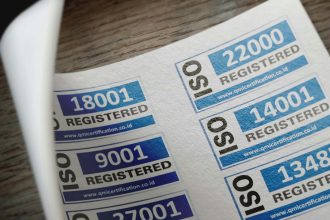Carrie Chapman Catt’s Vision: The Future of Women’s Suffrage
The fight for women’s suffrage was a long and arduous journey, marked by unwavering dedication and strategic brilliance. At the heart of this movement stood figures like Carrie Chapman Catt, whose leadership and foresight guided countless women toward the ballot box. A pivotal moment in this struggle was Catt’s address to the National American Woman Suffrage Association’s (NAWSA) 50th convention in St. Louis, Missouri. This wasn’t just a speech; it was a blueprint for the future, a testament to the power of organized action, and a vision that resonated far beyond the immediate goal of suffrage.
Catt’s words, delivered at a critical juncture, encapsulated the hard-won progress and outlined the path forward. Her message was one of hope, strategy, and an unshakeable belief in the inevitable triumph of equality. Understanding her vision requires delving into the context of the time, the specific strategies she advocated, and the enduring legacy of her leadership.
The Historical Context: A Half-Century of Struggle
By the time of the 50th NAWSA convention, the women’s suffrage movement had been active for decades. Pioneers like Susan B. Anthony and Elizabeth Cady Stanton had laid the groundwork, facing immense societal opposition and legal barriers. The movement had evolved, grappling with internal divisions and external pressures, yet its core objective remained: to secure the right to vote for women across the United States.
Catt, a seasoned leader, understood the historical weight of this moment. The convention in St. Louis wasn’t just a gathering; it was a commemoration of past sacrifices and a launching pad for future endeavors. Her address was designed to energize delegates, reaffirm their commitment, and provide a clear, actionable strategy for achieving their ultimate goal.
Catt’s Strategic Masterclass: The ‘Winning Plan’
Carrie Chapman Catt was renowned for her organizational prowess and her ability to craft comprehensive strategies. Her leadership of NAWSA was characterized by a pragmatic approach, often referred to as the “Winning Plan.” This strategy recognized the complex political landscape and proposed a dual approach to achieving suffrage.
The State-by-State Approach
One cornerstone of Catt’s strategy was the continued pursuit of suffrage at the state level. While seemingly a slower path, it offered tangible victories and built momentum. By securing voting rights in individual states, suffragists could demonstrate the viability and benefits of women’s participation in the political process. This approach also allowed for tailored strategies that addressed the unique political and social conditions of different regions.
The Federal Amendment Push
Simultaneously, Catt championed the push for a federal amendment to the U.S. Constitution. This was the ultimate prize, guaranteeing suffrage nationwide and overriding any state-level opposition. The “Winning Plan” emphasized lobbying Congress, organizing national campaigns, and leveraging public opinion to pressure lawmakers into supporting a constitutional amendment.
Key Themes in Catt’s St. Louis Address
While the specific details of every speech are not always preserved in verbatim transcripts, the core messages and strategic directives of Carrie Chapman Catt’s addresses are well-documented. Her 50th convention speech likely touched upon several critical themes:
- The Urgency of the Moment: Catt would have emphasized that the time for suffrage was now, building on the progress made and the changing social landscape.
- The Power of Unity: She likely stressed the importance of solidarity within NAWSA and the broader women’s movement, urging members to overcome any internal disagreements for the common cause.
- The Need for Organization and Persistence: Catt was a firm believer in disciplined organization. Her speech would have reinforced the necessity of continued hard work, meticulous planning, and unwavering persistence.
- The Vision of a More Just Society: Beyond the vote itself, Catt often spoke of the broader implications of women’s enfranchisement for societal progress, advocating for a more equitable and democratic nation.
Impact and Enduring Legacy
Carrie Chapman Catt’s leadership and her strategic “Winning Plan” were instrumental in the eventual passage of the 19th Amendment in 1920. Her ability to balance the state and federal approaches, coupled with her tireless advocacy and organizational skills, proved to be a winning combination.
The St. Louis convention speech, as a representation of her strategic thinking, serves as a powerful example of effective social movement leadership. It highlights:
- Strategic Foresight: Catt didn’t just react; she planned for the long term, anticipating obstacles and devising solutions.
- Adaptability: The “Winning Plan” was not rigid; it adapted to the evolving political climate and the specific challenges faced in different states and at the federal level.
- Inspirational Leadership: Her addresses were not merely strategic pronouncements but also calls to action that inspired thousands to dedicate their time and resources to the cause.
The success of the suffrage movement, largely attributed to leaders like Catt, had a profound and lasting impact on American democracy. It expanded the electorate, brought new perspectives into political discourse, and paved the way for future civil rights advancements.
For those interested in the history of social movements and the fight for equality, understanding Carrie Chapman Catt’s approach offers invaluable lessons. Her strategic vision, born from years of experience and a deep understanding of political realities, remains a compelling case study in achieving significant social change.
For more on the history of women’s suffrage and the strategies employed, explore resources from organizations like the National Women’s History Museum, which provides comprehensive information on the movement and its key figures. You can find valuable insights on their official website: National Women’s History Museum.
Additionally, the National Archives offers primary source documents and historical context related to the 19th Amendment, providing a deeper understanding of the legislative battles and the individuals involved: National Archives – 19th Amendment.
Copyright 2025 thebossmind.com



